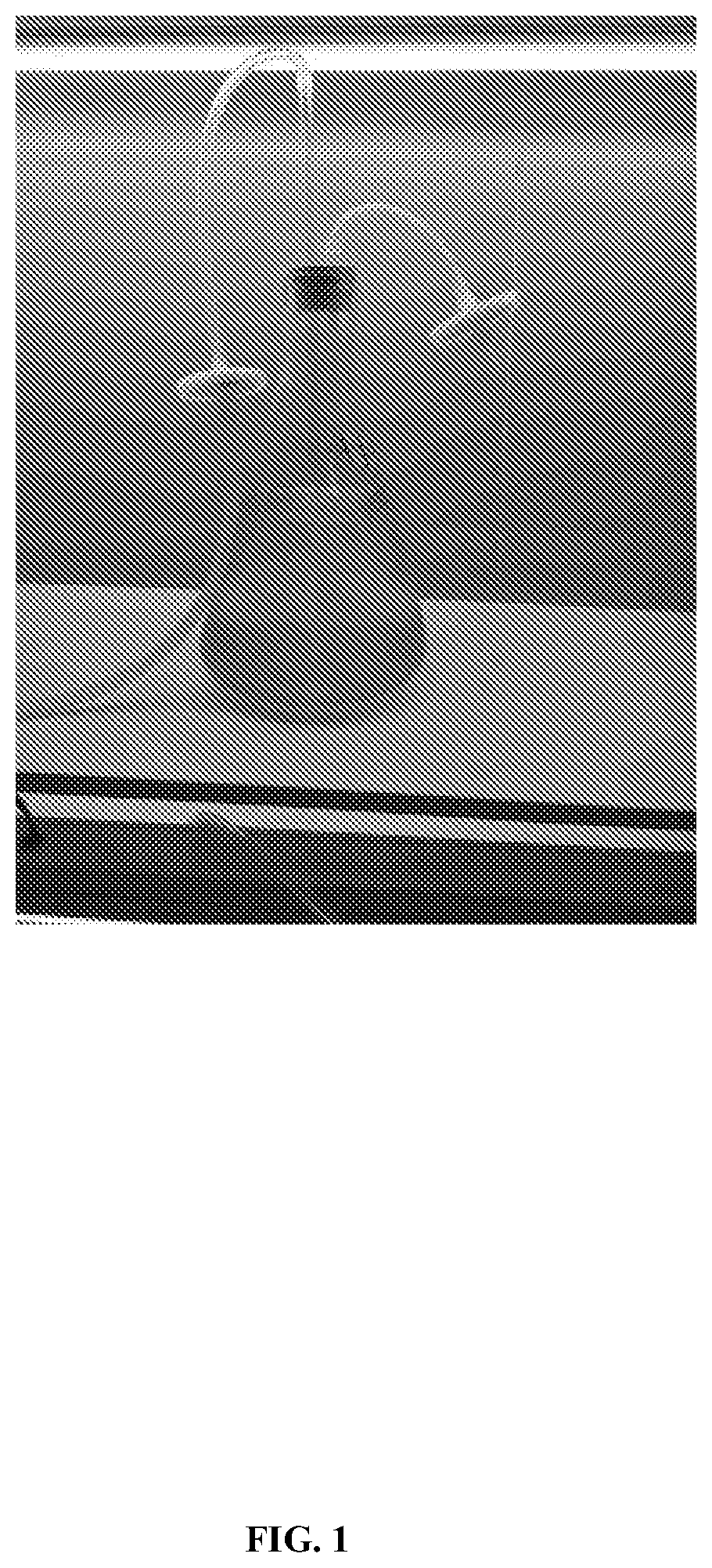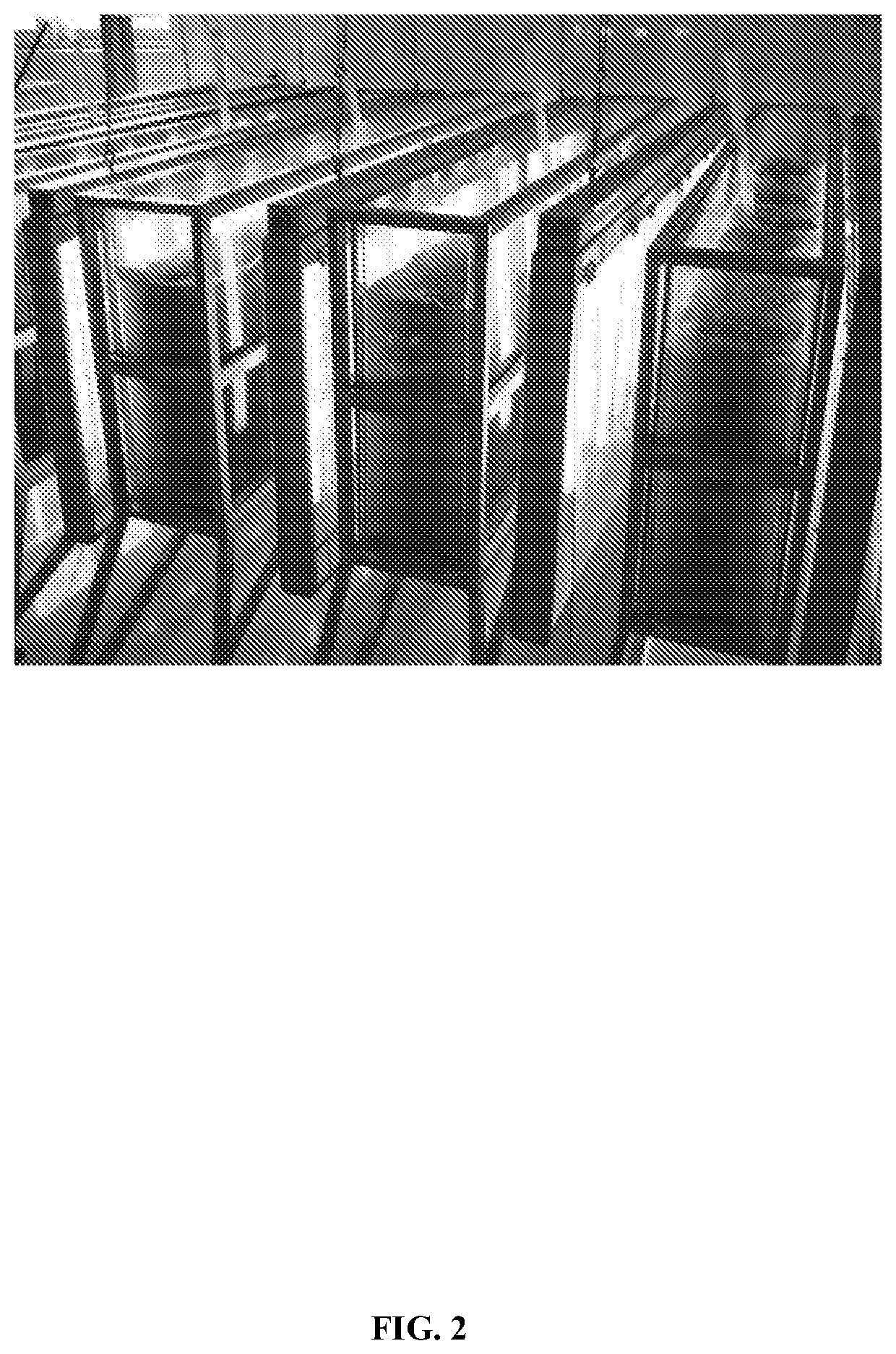Methods for harvesting microalgae
a technology of microalgae and harvesting methods, applied in the field of algaculture, can solve the problems of large resource investment, prone to contamination of microalgae, and difficult harvesting of high-quality microalgae, and achieve the effects of promoting optimal growth of microalgae species, promoting lipid, protein and carbohydrate content/composition, and reliable and efficien
- Summary
- Abstract
- Description
- Claims
- Application Information
AI Technical Summary
Benefits of technology
Problems solved by technology
Method used
Image
Examples
example 1
ltivation
1.1 Purification Process
[0043]Nannochloropsis sp. was collected in nature and then purified via a simple plating method, by which a single colony with only one microalgae strain in it is formed. Here is an example of preparing 1 Liter media to make agar plate. First 100 ml of each stock solution was prepared as follows:
[0044]
TABLE 1Stock SolutionsStock solution (100 ml)Mass (g)MgSO4 · 7H2O24.4KCl6Urea2.5CaCl2 · 2H2O3KH2PO4 · H2O0.35NaHCO310
[0045]22 g of NaCl and 15 g of Agar powder were added into 800 ml di H2O, then each stock solution was added as follows. Note that final concentration in the following table is calculated based on each compound in 1 Liter media
[0046]
TABLE 2Agar Plate MediaCompoundVolumeFinal concentration (g / L)NaCl / 22MgSO4 · 7H2O10 ml2.44KCl10 ml0.6Urea10 ml0.25CaCl2 · 2H2O10 ml0.3KH2PO4 · H2O10 ml0.035NaHCO3 2 ml0.2P-IV solution 1 mlPlease refer to Table 3Agar / 15
[0047]P-IV solution was prepared as follows. Note that the concentration is final to 1 L medi...
example 2
Measurement
2.1 Cell Density Measurement
[0070]200 ul algae media was sampled each day for cell density measurement. Samples were loaded onto 96 well plates and absorbance was measured at 682 nm via microplate reader (Molecular Device SpectraMax M2e).
[0071]The following relationship was used to evaluate the biomass of our production strain from the optical density measurement
Dry Cell Weight=OD682*0.687
2.2 Fatty Acid Measurement
[0072]The protocol was as follows:
[0073]a. 0.1 gram (the figure is accounted to three decimal places) of algae dry powder was weighed into 50 ml centrifuge tubes, and 21 ml of 2:1 chloroform(v) / methanol(v) solution was added. This was shaken on a vortex machine at a rate of 200 r / min for 12 hours.
[0074]b. The centrifuge tubes were kept stable until the mixture separated into multi-layers. The supernatant was extracted on the upper layer and transferred into a glass bottle.
[0075]c. 21 ml 2:1 chloroform(v) / methanol(v) solution was added to the unfinished centrifug...
example 3
ultivation
3.1 Media Preparation
[0083]During outdoor cultivation, unpolluted sea water was directly used and pumped from ocean as the media which may significantly reduce costs. Fresh water was firstly used to adjust the salinity to 22 (NaCl / media=22 g / L). Then each component was added (powder was directly poured into ponds) as follows into the media. Any other component was usually not added into sea water except urea and NaH2PO4.2H2O since natural formula of sea water was used.
[0084]
TABLE 9CompoundFinal concentration (g / L)Urea0.25NaH2PO4 · 2H2O0.00572
3.2 Pond Design
[0085]Open raceway ponds were used to scale up microalgae from the indoor plate photo-bioreactors when OD682 in the bioreactors reached 0.4. To construct a pond, a 0.5 m raceway-shaped trench was first dug on the soil ground then covered with HDPE films. Several films were welded to completely cover the pond and the middle ridge without any leakage.
[0086]A paddle wheel connected to an electric motor was set between the r...
PUM
| Property | Measurement | Unit |
|---|---|---|
| concentration | aaaaa | aaaaa |
| concentration | aaaaa | aaaaa |
| concentration | aaaaa | aaaaa |
Abstract
Description
Claims
Application Information
 Login to View More
Login to View More - R&D
- Intellectual Property
- Life Sciences
- Materials
- Tech Scout
- Unparalleled Data Quality
- Higher Quality Content
- 60% Fewer Hallucinations
Browse by: Latest US Patents, China's latest patents, Technical Efficacy Thesaurus, Application Domain, Technology Topic, Popular Technical Reports.
© 2025 PatSnap. All rights reserved.Legal|Privacy policy|Modern Slavery Act Transparency Statement|Sitemap|About US| Contact US: help@patsnap.com



